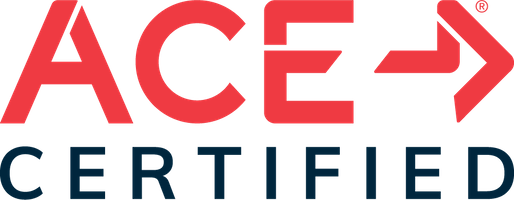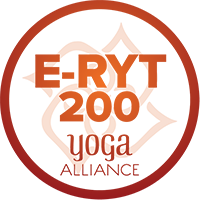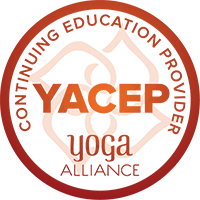[image courtesy of freepik.com]
How does strength training reduce stress?
It seems like a paradox.
“I’m too tired to strength train.”
“Exercise is just more stress on my already tired body.”
“The world and my life feel too heavy to pick up heavy things.”
It does seem counterintuitive that strength training, while creating a stress response, can simultaneously reduce your stress and help you feel more confident, less agitated, more energized, and less overwhelmed in your life. The trick is the right kind of strength training for you! You want to choose strengthening exercises that take into consideration your history, your current lifestyle, how you think about yourself (like all those self limiting thoughts above!) programmed with appropriate rest and recovery activities.
How does it work though? How does strength training reduce my anxiety? My overwhelm? My physical pain?
When I was younger and had more reserves I could pop into any fitness class or crossfit gym and go hard. My own training regimen was pretty intense and I loved it. I paid a lot of attention to my diet, sleep, and hydration. Then I got sick. During my recovery I tried to “get back to it” in the gym and failed miserably. I didn’t have the energy. I couldn’t get through a scaled back workout like I had been doing or recover from it. I went the “rest and stretch” route for a long time and I got weak. I started having chronic pain, muscle spasms, and mystery injuries…as well as some not so mysterious ones!
The way back was through mindful strength training. First, with isometric exercises. These are very powerful ways to maintain strength when you’re “laid up” and provide a wide range of benefits. Isometric strength training…
- helps keep your joints stable and strong by increasing tendon stiffness (have tendinitis? isometrics are for you)!
- increases muscle size (not in a bodybuilder kind of way, that’s a whole other program)!
- produces heat and improves circulation of blood & lymph (and when your lymph is flowing well you feel so much better in your body)!
- stabilizes your joints so your stretching practice is more effective and beneficial.
- increases tissue recruitment (getting more of the muscle & associated fascia to “share the load”).
- improves in nervous system communication (when you stimulate certain nerve endings, signals are sent to the brain that help you feel safe in your body).
- improves all the systems that help you move better (think injury prevention).
- stimulates your peripheral nervous system for increased body awareness and force production (proprioception).
- maintains strength during injury, illness or recovery.
- warms up the body tissues in preparation for movement practices.
- over time can lower blood pressure.
- are an excellent strategy for arthritic joints.
- stimulates your parasympathetic nervous system, bringing a sense of calm to your being.
- when you contract your muscles your brain secretes what researchers call “hope molecules” a powerful protective measure against depression.
Whew! That is a lot. Isometrics provide a big bang for your buck. They are so powerful, I have to share this story…
Ten years ago my mother was hospitalized with a bacterial infection in her spine that had been introduced during a spinal surgery decades earlier. She was bed bound for four (4!) months. If you’ve never been bed bound, I can tell you from my own 6 days in a hospital bed that the atrophy and muscle weakness happens fast and is serious. When I was finally able to get out of bed I immediately fell and had to use a shower chair for a few weeks…and I had been doing those crossfit workouts leading up to that illness! Anyway, the doctors told my mother that it was unlikely she would ever get out of that hospital bed again, essentially they didn’t expect her to survive. But they would treat her infection nonetheless.
You know what my mother did? Isometrics! Everyday she lay in that hospital bed…
…and squeezed and tensed her muscles, holding for several seconds and releasing. She repeated this throughout her body, using the bed and her own body. She did a “full body workout” in that bed everyday. Guess what? She walked out of that hospital four months later!
So what is isometric strength training? Isometrics are exercises that involve the contraction of muscles without any movement in the surrounding joints. Imagine a bicep curl, where you hold a dumbbell in your hand and flex your elbow bringing the dumbbell to your shoulder. Now imagine stopping somewhere in the arc of that movement and getting really still. Just holding the weight there for several seconds.
Here is another practical example you can do daily without equipment.
This is excellent for those of us that sit quite a bit during the day or try it out on your next long car ride. Sitting in your seat, squeeze your seat muscles (glutes). Hug those muscles to your bones and hold for three breaths. Keep your breath easy and smooth. Repeat 3 times.
Other examples of equipment free isometrics include such classics as wall sits, planks, and glute bridges. And, we can creative with props, simple one’s like using a wall or the floor (as in the examples above); a yoga block can help us get in some isometrics in the inner thighs while we move our arms with our breath; and we can use bands, belts, and external loads like dumbbells, cables, and kettlebells.
As you look over the benefits, consider how working your muscles through strengthening exercises can help you mitigate both physical, emotional and psychological pain, especially when they are personalized for you. If you’d like support with that, I’m here for ya!
May you be happy. May you be healthy. May you be and feel safe! May you live with peace and ease!
Remember: this post is for informational purposes only and may not be the best fit for you and your personal situation. It shall not be construed as medical advice. The information and education provided here is not intended or implied to supplement or replace professional medical treatment, advice, and/or diagnosis. Always check with your own physician or medical professional before trying or implementing any information read here.










